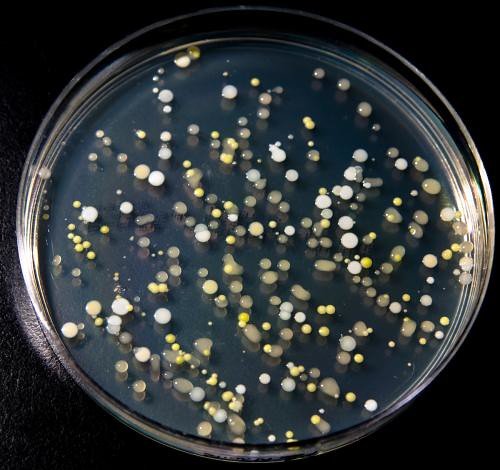Introduction to the Connection Between Microbes and Disease
Microbes are tiny organisms that can cause disease in humans. Microbes can cause a wide variety of human diseases, including colds, flu, gastroenteritis, and pneumonia. Microbes also play a role in cancer.
The connection between microbes and disease is complex. However, researchers have learned a lot about how microbes affect human health over the past few decades. In particular, researchers have learned that microbes can cause different types of diseases by causing inflammation or by creating tumors.
Inflammation is a response to injury or infection. Inflammation causes pain, fever, redness, and swelling in the body. It can lead to serious medical problems such as heart failure or stroke. In some cases, inflammation can cause cancer.
Cancers are caused by mutations in the genes of cells. The most common type of cancer is lung cancer. Lung cancer occurs when cells in the air sacs of the lungs grow out of control. Other types of cancers include: brain cancer (which is caused by changes in the genes that control brain function), colorectal cancer (caused by changes in the genes that control the growth and division of cells in the colon), ovarian cancer (caused by changes in the genes that control female reproductive organs), and sarcoma (a type of soft tissue tumor).
Researchers are still learning a lot about how microbes influence human health. However, they know that microbes play an important role in many diseases and illnesses.
Microbes and Respiratory Infections: The Common Cold and More
Respiratory infections are a common cause of infection and illness in humans. They can range from the common cold to more serious respiratory infections, including pneumonia. In fact, respiratory infections are the leading cause of death worldwide, according to the World Health Organization (WHO).
A variety of microbes can cause respiratory infections. The most common culprits are bacteria, viruses, and fungi. Each type of microbe causes different types of respiratory infections. Bacteria account for around two thirds of all respiratory infections, while viruses cause around one third. Fungi are responsible for less than one tenth of all cases of respiratory infection.
Common colds are caused by virus particles called rhinoviruses. These viruses enter your body through the nose and travel to the lungs where they replicate and cause symptoms such as sneezing, coughing, and a sore throat. The peak incidence of colds typically occurs during winter months in countries with colder climates (such as Canada). However, any time you’re exposed to rhinovirus particles your risk increases for developing a cold. Children are particularly at risk since their immune systems aren’t as strong as adults’ and they’re more likely to spread rhinovirus to others who may develop a cold symptoms.
Colds can be life-threatening if not treated quickly with antibiotics or other medications. Acute bronchitis is caused by bacteria such as Streptococcus pneumoniae which attack the lungs’ air sacs causing inflammation and difficulty breathing. Bronchitis is more common in smokers and people who are overweight. It can also be caused by viruses such as the common cold virus.
Pneumonia is a serious respiratory infection caused by bacteria, viruses, or fungi. It most often occurs in people over the age of 65 and can be fatal if not treated promptly. Symptoms of pneumonia include chest pain, shortness of breath, coughing up mucus, fever, and fatigue. If left untreated, pneumonia can spread to other parts of the body and lead to death.
There is no single cure for respiratory infections, but appropriate therapy (including antibiotics if needed) will help relieve symptoms and speed recovery. In some cases, surgery may also be necessary to remove the obstruction causing the infection.
Microbes and Gastrointestinal Diseases: Gastroenteritis and More
Microbes play an important role in human diseases, with gastrointestinal (GI) illnesses being a major focus. Gastroenteritis is the most common type of GI illness, and it can lead to a number of other health problems, including pneumonia, dehydration, and even death. Microbes are responsible for causing gastroenteritis, and there are many different types of microbes that can cause this condition. Some of the most common types of microbes involved in gastroenteritis are Escherichia coli (E. coli), Streptococcus pneumoniae, Salmonella typhimurium, and Shigella dysenteriae.
Gastrointestinal diseases can also be caused by viruses. The virus Helicobacter pylori is commonly associated with GERD (gastroesophageal reflux disease), and it can lead to Barrett’s esophagus and stomach cancer. Other viruses that have been linked to gastrointestinal diseases include the Epstein-Barr virus and the norovirus.
In addition to bacteria and viruses, parasites can also cause GI illness. Giardiasis is an example of a parasitic infection that can lead to gastroenteritis. Parasites such as hookworms can also cause intestinal polyps, which can be a sign of future cancer development.
There are many different types of microbes that can cause gastroenteritis, and there is no single cure for this condition. Treatment typically focuses on relieving symptoms and preventing further complications. Some of the most common methods used to treat gastroenteritis include antibiotics, antacids, and tonics. In some cases, surgery may be required to remove the infected tissue.
Microbes and Skin Diseases: Acne and More
Acne is a common skin condition that typically affects teenagers and young adults. It is caused by the overproduction of sebum, or oil, under the skin. Microbes can play a role in acne formation. One study found that people who had acne were more likely to have certain types of bacteria in their noses. These bacteria are known to cause inflammation and make oilier skin.
Other skin diseases linked to microbes include psoriasis and eczema. Psoriasis is an autoimmune disease that causes red, scaly patches on the skin. Eczema is a common, chronic skin condition that may be caused by environmental factors (such as allergens) or by certain types of microbes (such as Staphylococcus aureus).
Microbes and Sexually Transmitted Diseases: STDs and More
Sexually transmitted diseases (STDs) are caused by bacteria, viruses, and other microorganisms. They most commonly affect the genitals, but may also affect other parts of the body. Some STDs can lead to serious health problems such as cancer.
More than 200 million people worldwide are living with an STD, and new infections occur every day. About half of all new STDs are caused by gonorrhea, which is spread through contact with the discharge from a person who has gonorrhea. Other common STDs include syphilis, HIV/AIDS, and herpes simplex virus (HSV).
There is no single cure for any STD. Treatment usually includes antibiotics to kill the bacteria or viruses that are causing the infection, and sometimes vaccines or other medications to prevent future infections. Prevention is the best way to avoid getting an STD in the first place. You can protect yourself from many STDs by using condoms every time you have sex, regardless of whether you are infected with HIV/AIDS or not.
Microbes and Systemic Diseases: Sepsis and More
A microbe is a small organism that can cause disease. They are everywhere – in the air, on the ground, in water. Microbes can cause a wide range of health problems, from colds to cancer.
Some microbes cause diseases by entering your body through your skin or mouth. These infections are called “systemic infections” because they go beyond the specific location where they started (like a cold). Systemic infections can lead to serious health problems, like sepsis (a life-threatening condition caused by infection) or pneumonia (a lung infection).
Other microbes cause diseases by attacking your cells. These “pathogenic” microbes cause illnesses like pneumonia and tuberculosis. Pathogenic microbes often enter our bodies through open wounds or respiratory secretions (like saliva and mucus). If left untreated, these types of infections can lead to death.
Microbes and Chronic Diseases: Diabetes and More
Diabetes is a chronic disease in which the body doesn’t produce insulin properly, leading to high blood sugar levels. Diabetes can be caused by genetics or lifestyle factors, including obesity, lack of exercise, and eating too much sugar. Poorly controlled diabetes can lead to health problems such as heart disease, stroke, and blindness.
One common bacterial cause of diabetes is Streptococcus mutans. This bacteria is found in the mouths of people with diabetes and can ferment carbohydrates in the intestines, leading to high blood sugar levels. Treatment for streptococcal infections includes antibiotics and mouth rinse containing antiseptic agents.
Other microbes that have been linked to diabetes include Helicobacter pylori (a bacterium that causes stomach ulcers) and Candida albicans (a fungus). H. pylori is associated with an increased risk of developing Type 2 diabetes while C. albicans has been linked to an increased risk of developing Type 1 (juvenile) diabetes mellitus. Both bacteria can also increase the risk of other types of cancer.
There are many ways to prevent or treat diabetes using strategies that incorporate microbes into the overall treatment plan. For example, probiotics (live microorganisms that promote good gut health) have been shown to improve glycemic control in people with type 2 diabetes by increasing intestinal sensitivity to insulin and reducing inflammation markers in the gut. In another study, probiotics were also found to reduce symptoms related to Type 2 diabetes, including increased hunger and cravings, reduced energy levels, and weight gain.
There is still much to learn about the role of microbes in diabetes and other chronic diseases, but this area of research is paving the way for new and more effective treatments.
Microbes and Cancer: The Connection and Ongoing Research
Microbes play a major role in human diseases, from colds to cancer. Researchers are exploring the connections between microbes and human health, and they are learning more every day about how microbes can cause disease.
Microbes and cancer: The connection
Cancer is a complex disease that can result from the interactions of many different factors, including genetics, lifestyle choices, and the environment. But one important player is always microbes.
Studies have shown that certain types of microbes can increase the risk of developing cancer. For example, colon cancer is strongly linked to diet—those who eat a lot of processed foods and red meat tend to develop the disease more often than those who eat a healthy diet full of fruits and vegetables. And research has also shown that exposure to air pollution can increase the risk of pancreatic cancer.
Scientists are still working to understand all of the ways in which microbes influence human health, but they are making progress every day. And as they learn more about how microbes impact cancer development, they may be able to help people stay healthier overall.
Conclusion: The Importance of Understanding the Role of Microbes in Human Diseases
Microbes are important players in human diseases, and scientists are constantly trying to better understand their roles. In this blog post, we will discuss the importance of microbes in several human diseases.
Colds: A Good Example of How Microbes Are Important in Human Disease
The cold is a good example of how microbes can be important factors in human disease. The common cold is caused by viruses, which are tiny particles that invade the body through the nose and throat. When these viruses enter cells, they cause inflammation (a response to an infection). Inflammation can lead to a number of problems, including a sore throat, a fever, and headache.
Infections caused by viruses are usually mild and last only a few days. However, some people can become seriously ill if they develop an infection with a virus that causes pneumonia (a condition in which the lungs become infected). Pneumonia is one of the leading causes of death in young adults worldwide. It is also one of the most common causes of death among people aged 65 and older. Pneumonia can be deadly even if you only have mild symptoms at first.
Infections caused by bacteria can also lead to colds. Bacteria cause infections by entering cells and spreading out quickly throughout the body. This type of infection is called an acute bacterial infection (ABI). Acute bacterial infections are more serious than infections caused by viruses and typically last for about 7 days. They can lead to pneumonia, meningitis (an infection of the membrane that surrounds the brain and spinal cord), and other serious conditions.
There are a number of ways to prevent colds. You can avoid getting sick by avoiding contact with people who are sick, using a good hand hygiene (washing your hands often with soap and water) policy, and getting vaccinated against common viruses. If you do get sick, taking medications to reduce the inflammation caused by the virus can help speed up the healing process.
Moving Forward: Advances in Microbial Research and their Applications in Medicine
Microbes have long been documented as key players in human diseases, both as causative agents and as potential targets for therapeutic intervention. Advances in microbial research over the past few decades have led to significant advances in our understanding of how microbes influence human health and disease.
Microbial research has helped us better understand the pathogenesis of many common diseases, such as colds and flu, respiratory infections, skin conditions, gastrointestinal disorders, and even cancer. By learning more about the role that microbes play in human health and disease, we are better equipped to develop targeted interventions and therapies that can improve patients’ health outcomes.
One of the most important recent developments in microbial research is our increased understanding of how microbes interact with each other and with their host cells. This knowledge has led to new ways of managing infection and promoting healthy immune function. Additionally, this information has enabled us to develop novel diagnostic tools and treatments for chronic diseases such as asthma, Crohn’s Disease, Alzheimer’s Disease, multiple sclerosis, and obesity.







